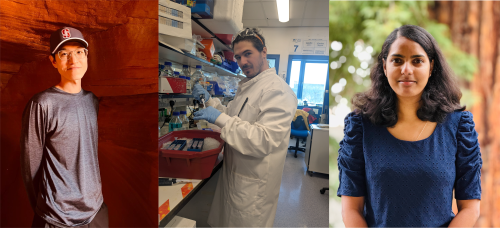
In new work funded by Aligning Science Across Parkinson’s (ASAP) researchers in the laboratories of Miratul Muqit and Dario Alessi at the MRC PPU in collaboration with Suzanne Pfeffer at Stanford University have identified a unifying mechanism in the brain that may explain how mutations in two distinct PD-linked genes lead to Parkinson’s disease (PD).
To date 20 genes have been identified in families with monogenic forms of PD including the protein kinases LRRK2 and PINK1. There is great interest in understanding whether PD genes may be linked in common pathways. In previous work the Muqit lab has contributed studies showing PINK1 functions with Parkin that is critical for mitochondrial homeostasis. The Alessi lab has demonstrated that LRRK2 pathway activation is affected by mutations in other PD genes including VPS35, Rab32, Rab29 and GBA1. In recent years, the Pfeffer, lab discovered that PD-linked mutations in LRRK2 cause defects in primary cilia in a subset of neurons and astrocytes. However, to date it was not clearly established whether the PINK1 and LRRK2 kinase pathways may interact and how these pathways function together in the brain had not been examined.
To address this question, postdocs Sophie Burel and Enrico Bagnoli in the Muqit and Alessi labs investigated potential interaction of PINK1 and LRRK2 in vivo by undertaking crosses of PD mouse models in which the LRRK2 R1441C mice was crossed with PINK1 knockout mice. By monitoring substrates of PINK1 and LRRK2 in both primary cells and select brain regions of mutant mice, they found that PINK1 and LRRK2 signalling operates in two distinct parallel pathways. During this analysis Enrico discovered that the LRRK2 pathway phosphatase, PPM1H, was up-regulated in primary cells following mitochondrial stress and found this was due to elevated transcription. Furthermore, Samuel Squire, a visiting summer student in the Muqit lab, undertook further analysis to demonstrate that multiple types of mitochondrial stress led to phosphatase upregulation.
Strikingly, Yu-En Lin and Ebsy Jaimon, in the Pfeffer lab found that PINK1 knock-out exhibit cilia defects including fewer and shorter primary cilia in both cholinergic interneurons and astrocytes within the striatum. Primary cilia are signaling hubs crucial for sonic hedgehog and glial-derived neurotrophic factor (GDNF) signaling. Loss and/or shortening of the cilia impacts GDNF production, resulting in decreased GDNF release in the substantia nigra and a loss of neuroprotective factors for the vulnerable dopaminergic neurons. Consistent with this Yu-En and Ebsy found that PINK1 knock-out mice have fewer and shorter primary cilia, resulting in the loss of GDNF in the substantia nigra. Interestingly they found that combining the PINK1 knockout and LRRK2 mutant mice did not lead to further cilia defects suggesting that cilia loss if a convergent mechanism due to parallel signalling defects in the PINK1 and LRRK2 mutant animals.
These findings indicate that treatments aimed at restoring GDNF signaling may benefit different genetic forms of Parkinson’s disease patients including PINK1 and LRRK2 patients. The analysis also suggests that PINK1 patients are unlikely to benefit from LRRK2 inhibitors that are currently in clinical trials.
The study of PINK1 and LRRK2 mice was also helped with collaborations with Stephen Dunnett (Cardiff), Ricardo Brambilla (Cardiff, Pavia), and Wolfdieter Springer (Mayo Clinic Jacksonville). The study was supported by funding from ASAP, the Michael J Fox Foundation, Medical Research Council and Wellcome Trust.
To read a copy of the paper, click here

